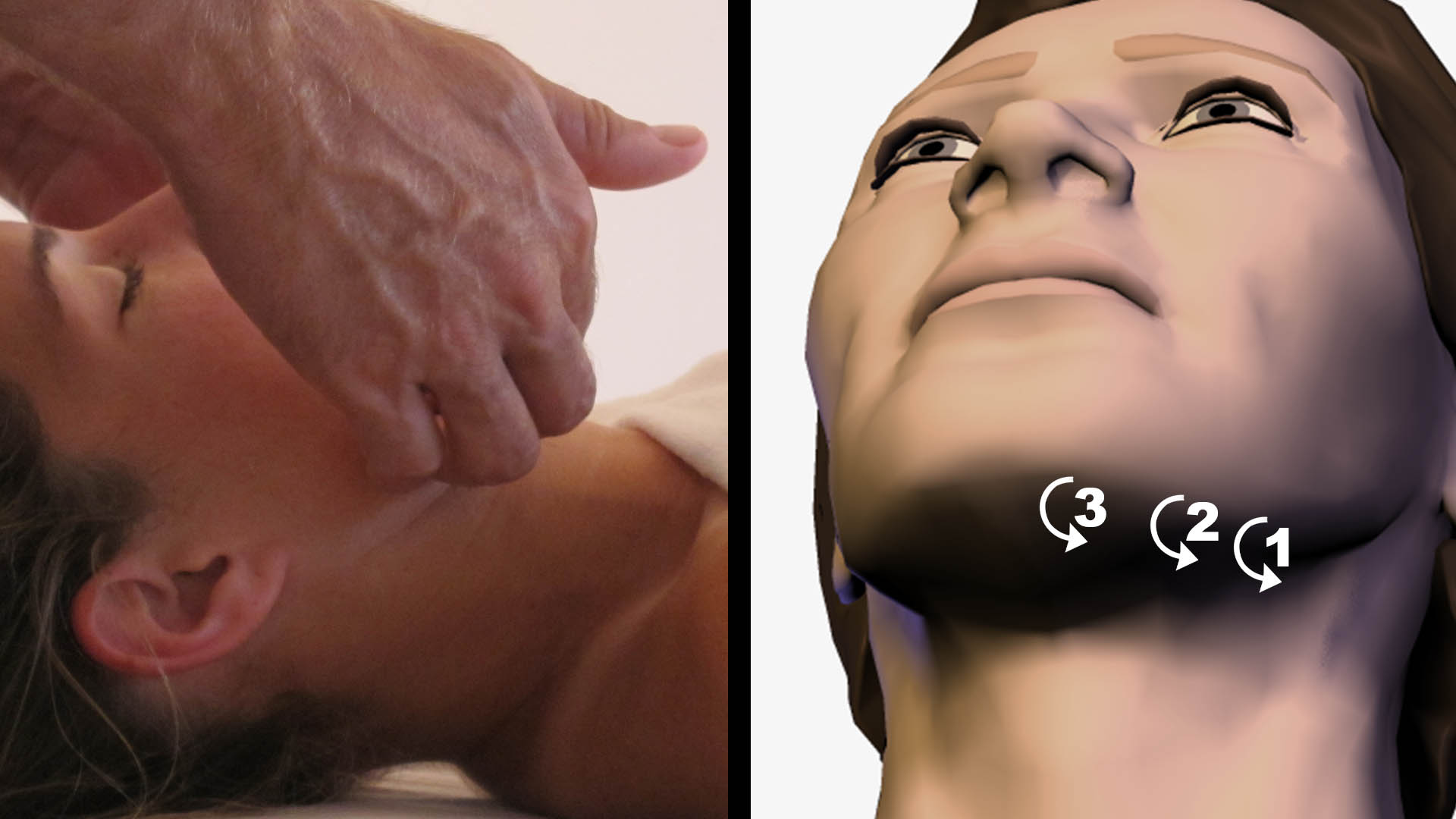Lymphatic Drainage Techniques
All the Lymphatic Drainage techniques are based on one principle motion. Research has found that the initial lymphatics open up and the lymph angions are stimulated by a straight stretch, but even more so with a little lateral motion. After these 2 motions, we need to release completely to allow the initial lymphatics to close and the lymph to be sucked down the channels. In this zero pressure phase don’t completely disconnect from the skin, just return your pressure to nothing. Also don’t pull the skin back with you as you return, let it spring back by itself.
This basic lymphatic technique may resemble a circle, and is called stationary circles. All motions are based on this principle.
In orienting this motion, we always want to push the lymph towards the correct nodes, so the last, lateral stretch motion should be going towards the nodes.
Think about moving water. Visualize those initial lymphatics just in the skin, stretch, opening them up, then release and wait for the lymph angions to pump the lymph down the vessel. Remember how superficial this is. If you are feeling muscle, or other tissue under the skin, you are pushing too hard.
Here are four points remember when performing Lymphatic drainage massage techniques-
1. Correct pressure is deep enough so that you do not slide over the skin, but light enough so that you don’t feel anything below the skin. This is about 1-4 ounces. It is very common for massage therapists trained in Swedish or deep tissue to apply too much pressure with lymphatic drainage massage. Sometimes it is hard to believe that something so light could be effective. Always remember- you are working on skin. How much pressure does it take to deform the skin? Almost nothing. Remember- if you push too hard you collapse the initial lymphatic.
2. Direction of your stroke is of great importance, because we always want to push the lymph towards the correct nodes. If you push the lymph the wrong way, your work will not be effective.
3. Rhythm is very important while performing lymphatic drainage techniques, because with the correct rhythm and speed, the initial lymphatics are opened, and then allowed to shut and then there is a little time that is given for that lymph to get sucked down along the vessel. An appropriate rhythm will also stimulate the parasympathetic nervous system, causing the client to relax.
4. Sequence means the order of the strokes. When we want to drain an area, we always start near the node that we are draining to. Always push the lymph toward the node when you are performing the techniques. Then as we work, we move further and further away from the node, but always pushing the fluid back in the direction of the node. In this way we clear a path for the lymph to move, as well as create a suctioning effect that draws the lymph to the node.
Sean Riehl is the author of the DVD, Lymphatic Drainage Massage.


Follow Us!